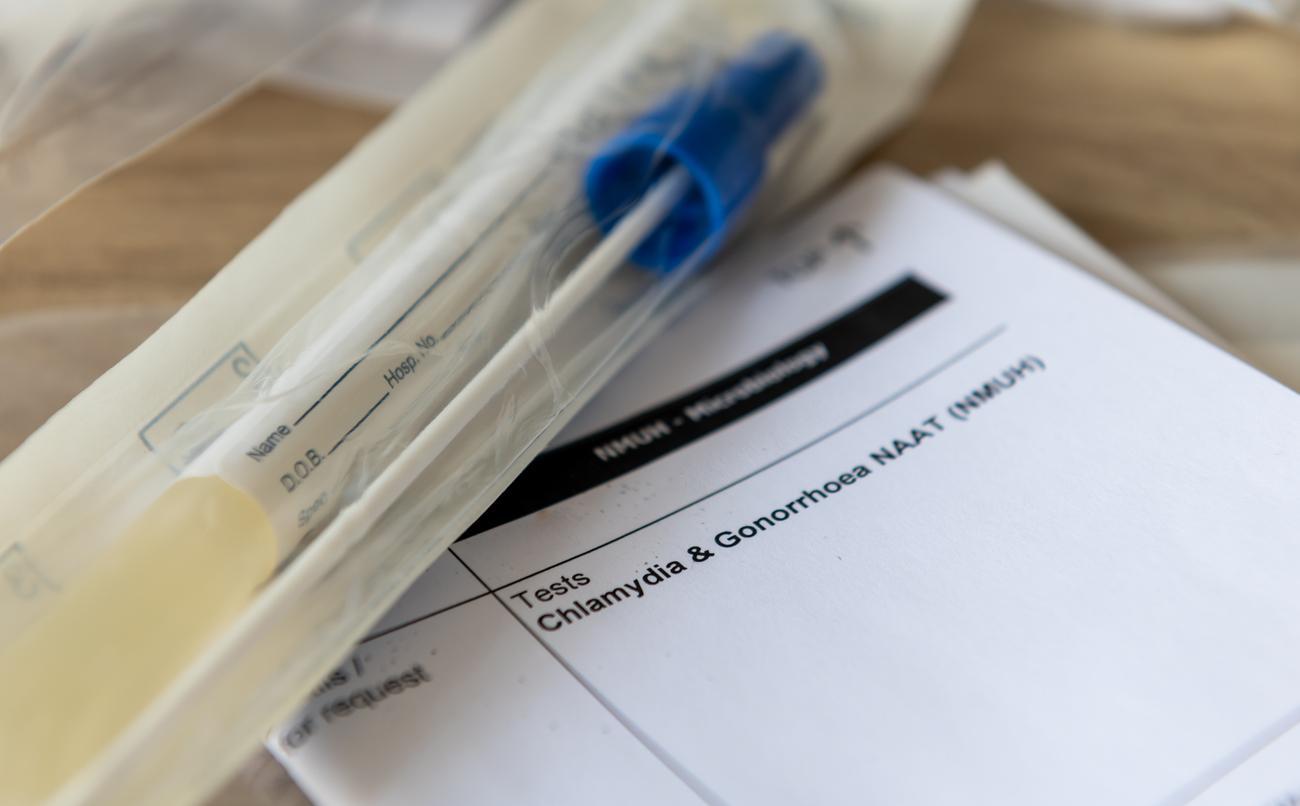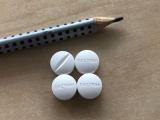Two new studies suggest that a dose of doxycycline taken within 3 days of unprotected sex is associated with significant decreases in some sexually transmitted infections (STIs).
The studies, published this week in JAMA Internal Medicine, found that the incidence of chlamydia and syphilis fell by 50% to 80% in men who have sex with men (MSM) and transgender women in California who were prescribed doxycycline post-exposure prophylaxis (doxyPEP) in the year after the San Francisco Department of Public Health (SFDPH) released doxyPEP implementation guidelines. The intervention was much less effective against gonorrhea, however.
DoxyPEP was recommended by SFDPH for MSM and transgender women with a history of STIs following the results of a randomized trial conducted in San Francisco and Seattle that found that the incidence of chlamydia, syphilis, and gonorrhea fell by 88%, 87%, and 55%, respectively, among participants who took 200 milligrams of doxycycline within 72 hours of condomless sex. A randomized trial conducted in France showed similar results.
Based on these data, and with the hope of making a dent in a years-long increase in US STI incidence, the Centers for Disease Control and Prevention recommended doxyPEP for the same populations in June 2024.
The two studies are among the first to report on real-world use of the intervention.
DoxyPEP implementation in San Francisco
In the first study, researchers with SFDPH, the University of California, San Francisco, and the San Francisco AIDS Foundation used reportable disease surveillance data to examine city-wide STI incidence before (July 2021 to October 2022) and after (November 2022 to November 2023) SFDPH released its doxyPEP guidelines. With one of the highest rates of STIs of any city in the country, San Francisco was the first US city to issue such guidance.
Lead study author and director of STI and HIV Prevention and Control at SFDPH, Stephanie Cohen, MD, MPH, said the department moved quickly to publish guidelines and disseminate them to sexual health providers in the city following the initial release of the Doxy-PEP trial results in July 2022. They decided to analyze the impact of the intervention on city-wide STI incidence after they started getting questions from other health departments around the country about the rollout.
"The first question anyone asked us was, 'Are you seeing an impact at the population level?'" Cohen told CIDRAP News. "We wanted to study the rollout, but I think the importance of doing that in a timely fashion became more evident as other [health departments] began asking questions."
The primary outcome of the interrupted time-series analysis was the percentage change between the projected and observed incidence of chlamydia, early syphilis, and gonorrhea among MSM and transgender women in San Francisco in the 13 months following release of the guidelines. Projected incidence was based on STI trends prior to the rollout.
Although Cohen and her colleagues were not able to evaluate city-wide uptake of doxyPEP, data from three sentinel STI clinics in San Francisco showed that 3,974 (19.5%) of 20,406 MSM and transgender women initiated doxyPEP from November 2022 to December 2023.
"I think that number, for a brand-new intervention that's at the beginning of being rolled out, is high," Cohen said. "I think it illustrates a very high interest among the population."
.jpg)
Overall, there were 6,694 cases of chlamydia, 9,603 cases of gonorrhea, and 2,212 cases of early syphilis reported among MSM and transgender women over the entire study period. By November 2023, chlamydia cases had decreased by 49.6% (95% confidence interval [CI], –59.1% to –38.1%) and early syphilis cases by 51.4% (95% CI, –58.2% to –43.5%) compared with projected cases.
"That is really quite a remarkable decline at the population level to see in such an early time period after introduction," Cohen said. "So I think it's really a very exciting result."
Gonorrhea cases were up 25.6% (95% CI, –0.4% to 58.3%) compared with projected incidence, however.
While Cohen says she and her colleagues can't conclude a causal relationship between doxyPEP use and the decline in chlamydia and early syphilis in MSM and transgender women, they note that a concurrent increase in chlamydia cases in San Francisco over the study period was seen in cisgender women, in whom doxyPEP is not recommended. Cohen and her colleagues write that this finding, along with the abrupt change in the trajectory of case counts following a decade of rising STI rates in the city, "suggest that these declines were due at least in part to doxyPEP use."
Larger chlamydia, syphilis reductions seen in HIV PrEP users
In the other study, a team led by researchers with Harvard Pilgrim Health Care Institute and Kaiser Permanente examined electronic health record data on HIV pre-exposure prophylaxis (HIV PrEP) users at Kaiser Permanente Northern California (KPNC) who were dispensed doxyPEP from November 2022—when doxyPEP was first offered to KPNC members—through December 2023.
The researchers looked at STI rates 24 months before and 12 months after starting doxyPEP and compared quarterly STI incidence in those dispensed and not dispensed doxyPEP.
That is really quite a remarkable decline at the population level to see in such an early time period after introduction....So I think it's really a very exciting result.
Among 11,551 HIV PrEP users at KPNC, 2,253 (19.5%) were dispensed doxyPEP, 98.9% were male, and 48.6% had an STI in the prior year. Among doxyPEP recipients, quarterly chlamydia positivity fell 79%, declining from 9.6% before starting doxyPEP to 2.0% after (rate ratio [RR], 0.21; 95% CI, 0.16 to 0.27), while quarterly syphilis positivity decreased 80% (1.7% to 0.3%; RR, 0.20; 95% CI, 0.11 to 0.37). Quarterly gonorrhea positivity fell by only 12%, dropping from 10.2% to 9.0% (RR, 0.88; 95% CI, 0.77 to 1.00), with significant site-specific declines for rectal and urethral gonorrhea but not for pharyngeal gonorrhea.
Meanwhile, when the researchers examined STI incidence among the entire cohort of HIV PrEP users, they found that STI rates post-implementation remained stable for those who had not received doxyPEP. By the end of the study period, chlamydia and syphilis positivity were lower among doxyPEP recipients than non-recipients, even though it was higher among recipients prior to doxyPEP implementation.
The authors say the findings of study, which is the largest reported globally to date, suggest the dramatic STI declines seen in doxyPEP clinical trials could be achievable.
"Interventions that are effective in clinical trials don't always end up working in real-world settings, where people tend to face more barriers to consistent medication use," Michael Traeger, PhD, a research fellow at Harvard Pilgrim Health Care Institute and lead author of the study, said in a press release. "We were excited to see that doxyPEP users in our study experienced declines in chlamydia and syphilis comparable to those observed in clinical trials."
Traeger and his colleagues add that wider implementation of doxyPEP may offer "substantial benefits" for reducing population-level STI transmission.
Lingering questions
In an accompanying commentary, National Institute of Allergy and Infectious Diseases director Jeanne Marrazzo, MD, MPH, and Jodie Dionne, MD, MPH, of the University of Alabama at Birmingham, say the findings, which come amid global increases in bacterial STI incidence and slow vaccine and antibiotic development efforts, are encouraging.
"These studies provide welcome evidence for the effectiveness of doxyPEP in preventing syphilis and chlamydia acquisition among an early-adopter group of males and transgender women engaged in care," they write.
But they also note that lingering questions remain. Among them is why doxyPEP did not have the same effect on gonorrhea incidence.
We were excited to see that doxyPEP users in our study experienced declines in chlamydia and syphilis comparable to those observed in clinical trials.
One possibility, Cohen suggests, is that the prevalence of tetracycline-resistant gonorrhea strains is rising in San Francisco. She said data that she and her SFDPH colleagues presented at a recent conference show that the prevalence of tetracycline-resistant gonorrhea in San Francisco began climbing even before the doxyPEP rollout began, possibly because of wider use of doxycycline for other STIs.
"That is the most likely explanation," she said. "There's just a lot of doxycycline use in the community."
Similarly, the authors of the KPNC study suggest varying levels of protection against gonorrhea could reflect varying background levels of tetracycline resistance.
There are also questions about the potential for widespread doxyPEP uptake to increase antibiotic resistance in other common bacterial pathogens that reside in the anatomical sites were STIs occur, like Staphylococcus aureus and Streptococcus pneumoniae. Cohen said she'll be among the researchers looking at that issue in an upcoming study conducted in five US cities.
Marrazzo and Dionne say the data on doxyPEP-linked antibiotic resistance is only beginning to emerge and will need to be monitored going forward.
"Future studies could aim to relate direct measurement of doxyPEP intake to efficacy, address the durability of this intervention as defined by sustained efficacy, and, critically, assess thoroughly any impact on trends in antimicrobial resistance," they write. "The evolving database will be necessary to assess long-term risks and benefits in other populations and to track progress as the targeted pathogens inevitably evolve."





















